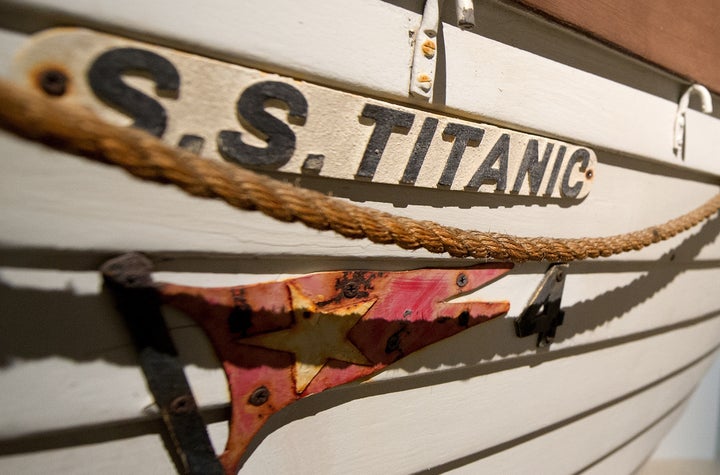
There's a growing parade of theater artistic directors who hope their work is a first impression on an audience which does not know much about the subject matter of a show. Yet, it is hard to imagine how not knowing much is beneficial unless you are a lawyered-up Wall Street type who used customer money for trades that went sour and pushed your firm into bankruptcy. Both critical and creative thinking depend on previously gathered information and impressions. So I have long rolled my eyes when theater directors spoke against too much pre-performance education about their show.
However, I am reconsidering based on Eastland presented by Lookingglass Theatre in Chicago -- the way the show works on multiple levels. I did not know much about the Eastland going into the show.
Eastland is a musical about the SS Eastland, which rolled over in the Chicago River on July 24, 1915 killing hundreds of excursioners who were on their way to a Western Electric Company picnic in Michigan. The show has smart direction by Amanda Dehnert, memorable melodies and harmonies by Ben Sussman and Andre Pluess, solid singing and acting, plus the gymnastic acting of Doug Hara who plays Reggie the human frog.
This is a show that works on a much deeper level than just the skillful and talented communication of actors, singers, musicians and gymnast. Call it unconscious or metaphysical or the unnamed, it is rare in new works and the reason why I highly recommend this show.
After you see the show, take the time to see the special exhibition of artifacts from the SS Eastland on display in the Water Tower Visitors Center only steps from the theater. The collection is on loan from the Eastland Fellowship Authority at the Center for History, Wheaton, IL through August 24, 2012.
The special exhibition was curated by the Eastland Fellowship Authority and includes rare artifacts from the SS Eastland disaster, including the program book for the ill-fated excursion, tickets for the excursion, as well as the ticket record book; a rescue dive collar, breathing tube and weight belt used during the disaster rescues; a deck chair from the SS Eastland; and the original letter sent to iron worker Elmer Nelson from the Chicago Coroner in recognition of his service in the Eastland disaster. The display includes rare photos, and facts and figures that compare the Eastland to the Titanic. Also included are newspaper front pages, and informational panels about the disaster, its aftermath, and why the tragedy has been largely lost to history.
When a story begins to be lost to history, simple important facts have already slipped away. When I asked Colleen Wilson, formerly of the Center for History in Wheaton, IL about the disaster, Wilson said that the last survivor died in 2004 and that the account of her survival at the Center for History was that she was pulled from the river up the bank and never knew who saved her. But the 2004 obituary of Libby Hruby makes no mention of how she was saved by an unknown rescue worker when she was ten years old.
Imagine the life story of a man who saved a young girl who went on to live to be 99 years old and be the last known survivor of the Eastland disaster in 1915. Imagine this man, because there were many such Eastland stories and only a very few are of historical record.
The Eastland is slowly becoming known as a domestic Titanic story but with two huge differences. The Titanic carried as passengers mostly the movers and shakers of the day. The Eastland passenger list by, contrast, was 100% made up of employees and family members of the Western Electric plant in Cicero, IL. There was no significant rescue effort like on the Titanic. You either made it on the life boats or you did not. The story of the Eastland is of one rescue hero after another who stepped up and dove down, including the super human efforts of the "human frog" prominent in the show.
Eastland author Andrew White tells us that the musical is a work of fiction but that Jay Bonansinga's book The Sinking of the Eastland: America's Forgotten Tragedy was his principle source. The book is a solid recommendation for summer reading after you have seen the show.
I highly recommend Eastland which on one level is the story of how and why disasters, which are topic A today, are quickly forgotten, only to happen again and again. I leave it to you the audience to decide if the show is also a metaphor for the continuing disasters on Wall Street, quickly forgotten, only to happen again and again.